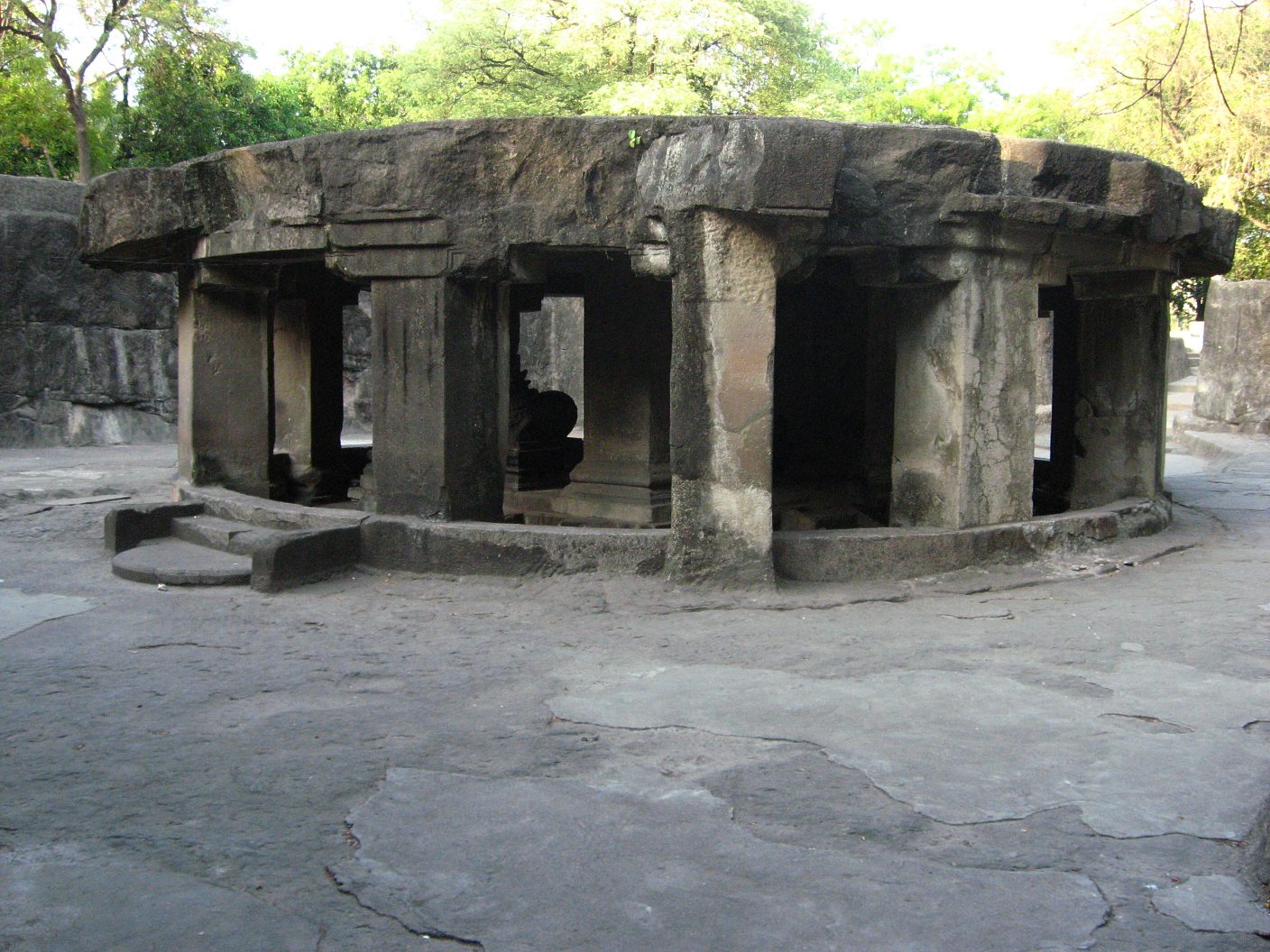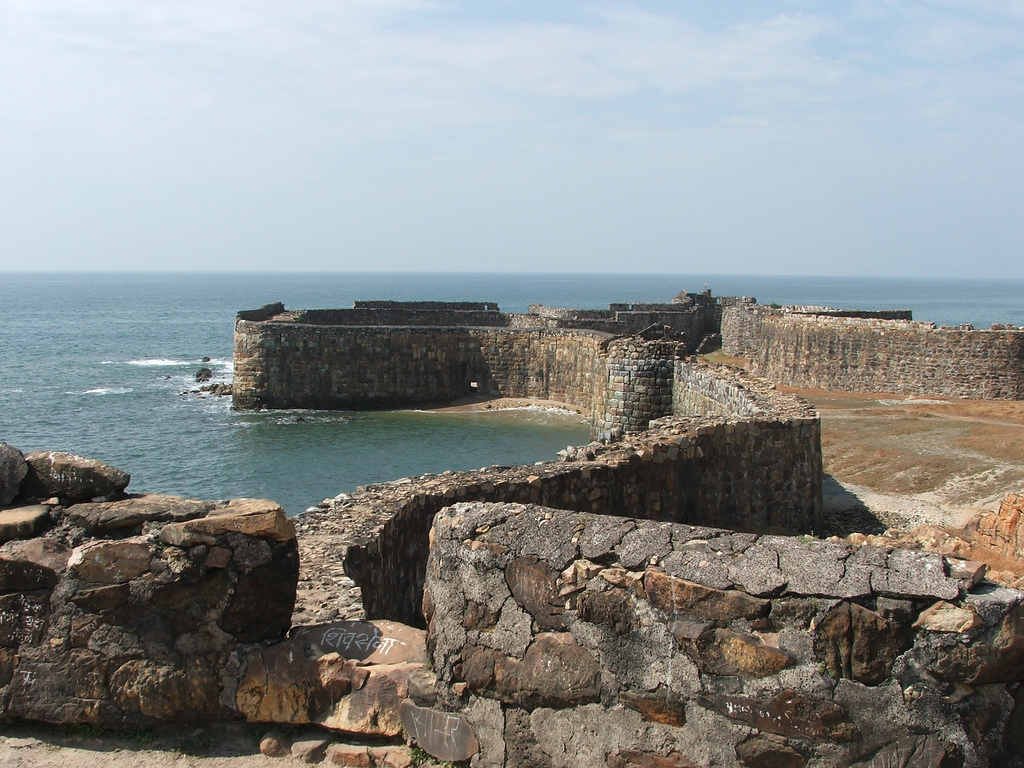|
Manikgad (Raigad)
Manikgad is a mountain fortress and temple in Gherakilla Manikgad, India. Located among rolling hills, the temple is a popular hiking spot. Manikgad was built to oversee the trade route from Maval (Pune) to coastal ports. The fort is situated near Vashivali ( Rasayani MIDC), which is 27 km from Panvel. History The fort was built by Sarkhel Kanhoji Angre, to whom it was ceded in 1718 by Peshavas. Description Only ruins of the fort remain. A big rock-cut cistern on the fort is called the "Darya take". A small shiva linga and a few small rock-cut cisterns are present. The Ganesh gate is the only standing structure. A circular trench is cut in the rock for lime Lime commonly refers to: * Lime (fruit), a green citrus fruit * Lime (material), inorganic materials containing calcium, usually calcium oxide or calcium hydroxide * Lime (color), a color between yellow and green Lime may also refer to: Botany ... mixing. Other nearby forts include Karnala, Prabalgad, Chanderi, Malan ... [...More Info...] [...Related Items...] OR: [Wikipedia] [Google] [Baidu] |
Raigad District
Raigad district (Marathi pronunciation: �aːjɡəɖ, previously Colaba district, is a district in the Konkan division of Maharashtra, India. The district was renamed to Raigad after the fort that was the first capital of the former Maratha Empire, which in turn was renamed from its earlier name - Rairi. The fort is located in the interior regions of the district, in dense forests on a west-facing spur of the Western Ghats of Sahyadri Range. In 2011 the district had a population of 2,634,200, compared to 2,207,929 in 2001. The name was changed in the regime of Chief Minister A. R. Antulay on 1 January 1981. In 2011 urban dwellers had increased to 36.91% from 24.22% in 2001. Alibag is the headquarters of Raigad district. Raigad district's neighbouring districts are Mumbai, Thane districts on North, Pune district on East, Satara district on South East, Ratnagiri district is present on South side and Arabian sea on West. History Kulaba (also spelled Kolaba) district was sp ... [...More Info...] [...Related Items...] OR: [Wikipedia] [Google] [Baidu] |
Maharashtra
Maharashtra (; , abbr. MH or Maha) is a state in the western peninsular region of India occupying a substantial portion of the Deccan Plateau. Maharashtra is the second-most populous state in India and the second-most populous country subdivision globally. It was formed on 1 May 1960 by splitting the bilingual Bombay State, which had existed since 1956, into majority Marathi-speaking Maharashtra and Gujarati-speaking Gujarat. Maharashtra is home to the Marathi people, the predominant ethno-linguistic group, who speak the Marathi language, the official language of the state. The state is divided into 6 divisions and 36 districts, with the state capital being Mumbai, the most populous urban area in India, and Nagpur serving as the winter capital, which also hosts the winter session of the state legislature. Godavari and Krishna are the two major rivers in the state. Forests cover 16.47 per cent of the state's geographical area. Out of the total cultivable land in the s ... [...More Info...] [...Related Items...] OR: [Wikipedia] [Google] [Baidu] |
Manikgad(Raigad)
Manikgad / (also called Gadchandur) ( mr, माणिकगड / गडचांदूर ) is an ancient fort in Chandrapur district, Maharashtra. It is a hill fort 507 metres above sea level built by the Naga kings in 9 CE. The fort is in ruins and is frequented by wild animals that live in the vicinity, such as panthers and boars The wild boar (''Sus scrofa''), also known as the wild swine, common wild pig, Eurasian wild pig, or simply wild pig, is a suid native to much of Eurasia and North Africa, and has been introduced to the Americas and Oceania. The species is n .... Several monuments of historical importance are nearby. History Manikgad was built by the last Mana Naga King - Gahilu. The Mana Nagas settled in this area around 9 CE. Initially, the fort was named Manikagad after the patron deity of the Mana Nagas - Manikadevi - but later on this was shortened to Manikgad. Local legend holds that the fort was built by a Gond king named Mankyal (hence the ... [...More Info...] [...Related Items...] OR: [Wikipedia] [Google] [Baidu] |
Pune
Pune (; ; also known as Poona, ( the official name from 1818 until 1978) is one of the most important industrial and educational hubs of India, with an estimated population of 7.4 million As of 2021, Pune Metropolitan Region is the largest in Maharashtra by area, with a geographical area of 7,256 sq km. It has been ranked "the most liveable city in India" several times. Pune is also considered to be the cultural and educational capital of Maharashtra. Along with the municipal corporation area of PCMC, PMC and the three cantonment towns of Camp, Khadki, and Dehu Road, Pune forms the urban core of the eponymous Pune Metropolitan Region (PMR). Situated {{convert, 560, m, 0, abbr=off above sea level on the Deccan plateau, on the right bank of the Mutha river,{{cite web , last=Nalawade , first=S.B. , url=http://www.ranwa.org/punealive/pageog.htm , title=Geography of Pune Urban Area , publisher=Ranwa , access-date=4 April 2008 , archive-url=https://web.archive.org/web/20071 ... [...More Info...] [...Related Items...] OR: [Wikipedia] [Google] [Baidu] |
Rasayani
Rasayani is a town located in Khalapur taluka of the Raigad district, Maharashtra, India India, officially the Republic of India ( Hindi: ), is a country in South Asia. It is the seventh-largest country by area, the second-most populous country, and the most populous democracy in the world. Bounded by the Indian Ocean on the .... In Rasayani Biggest MIDC in Khalapur Taluka lots Educational institute Rasayani . 64 km Away from Mumbai and 100 km Away from Pune . District Headquarters Alibag 50 km References {{Mumbai metropolitan area Villages in Raigad district ... [...More Info...] [...Related Items...] OR: [Wikipedia] [Google] [Baidu] |
Kanhoji Angre
Kanhoji Angre (Marathi: कान्होजी आंग्रे, anʱod͡ʒiː aːŋɡɾe, also known as Conajee Angria or Sarkhel Angré (August 1669 – 4 July 1729) was a chief of the Maratha Navy in present-day India. Kanhoji became known for attacking and capturing European merchant ships and collecting ''jakat'' (known to locals as taxes), seen by Europeans traders and colonists as ransoming of their crews. British, Dutch and Portuguese ships often fell victims to these raids. Despite attempts by the Portuguese and British to put an end to his privateering activities, Angre continued to capture and collect ''jakat'' from European merchant ships until his death in 1729. Kanhoji's naval prowess in capturing dozens of European trading ships and avoiding capture has led to many historians to appraise Kanhoji as the most skilled Indian navy chief in the maritime history of India. Early life Angre was born on the fort Suvarnadurg, near Ratnagari in the year 1667 to mothe ... [...More Info...] [...Related Items...] OR: [Wikipedia] [Google] [Baidu] |
Lingam
A lingam ( sa, लिङ्ग , lit. "sign, symbol or mark"), sometimes referred to as linga or Shiva linga, is an abstract or aniconic representation of the Hindu god Shiva in Shaivism. It is typically the primary ''murti'' or devotional image in Hindu temples dedicated to Shiva, also found in smaller shrines, or as self-manifested natural objects. It is often represented within a disc-shaped platform, the '' yoni'' – its feminine counterpart, consisting of a flat element, horizontal compared to the vertical lingam, and designed to allow liquid offerings to drain away for collection. Together, they symbolize the merging of microcosmos and macrocosmos, the divine eternal process of creation and regeneration, and the union of the feminine and the masculine that recreates all of existence. The original meaning of ''lingam'' as "sign" is used in Shvetashvatara Upanishad, which says "Shiva, the Supreme Lord, has no liūga", liuga ( sa, लिऊग ) meaning he is t ... [...More Info...] [...Related Items...] OR: [Wikipedia] [Google] [Baidu] |
Lime (material)
Lime is a calcium-containing inorganic material composed primarily of oxides and hydroxide, usually calcium oxide and/or calcium hydroxide. It is also the name for calcium oxide which occurs as a product of coal-seam fires and in altered limestone xenoliths in volcanic ejecta. The International Mineralogical Association recognizes lime as a mineral with the chemical formula of CaO. The word ''lime'' originates with its earliest use as building mortar and has the sense of ''sticking or adhering''. These materials are still used in large quantities as building and engineering materials (including limestone products, cement, concrete, and mortar), as chemical feedstocks, and for sugar refining, among other uses. Lime industries and the use of many of the resulting products date from prehistoric times in both the Old World and the New World. Lime is used extensively for wastewater treatment with ferrous sulfate. The rocks and minerals from which these materials are derived, ty ... [...More Info...] [...Related Items...] OR: [Wikipedia] [Google] [Baidu] |



